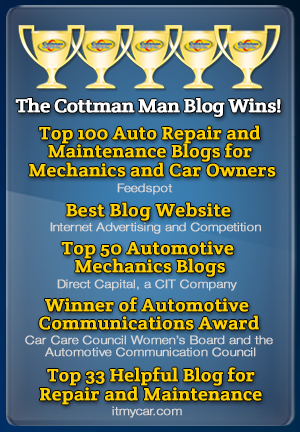By Randy Wright, President of Cottman Transmission and Total Auto Care
It comes as no surprise that auto sales numbers and the auto aftermarket are closely intertwined. However, the aftermarket can benefit whether there are an increased number of new cars on the road, or if the cars themselves are simply getting older. In addition, the vast size of the auto care industry (estimated at $368 billion consumer dollars in 2017) gives it the strength to weather smaller blips in sales from year to year without much change in its broader performance. So when car sales sneeze (plunging or climbing), the aftermarket doesn’t have to catch a cold—in fact, brands can grow more robust in response to evolving consumer demand.
As auto sales dipped in March, the aftermarket industry is looking at a consumer market that is focused on repairs and maintenance that will make their vehicles last longer than ever before—the average age of vehicles on the road has hit 11.6 years, and by 2021 more than 20 million cars on the road will be more than 25 years old.
For more specialized providers focused on specific auto care segments, including transmission, brake, tire or another type of repair or maintenance specialist, we have an opening to differentiate ourselves from general auto repair shops and dealerships in the aftermarket. It’s up to us to harness shifts in consumer demand to turn a drop in auto sales into growth in maintenance and repair services. There are several aftermarket spaces where specialists can capitalize on slower auto sales by focusing on core service execution.
Maintenance—make services fast and effective
As cars get older, consumers often turn to routine maintenance in an effort to coax more years than ever before from their vehicles. Consumers are quickly becoming more familiar which the ways a fluid change and transmission flush can keep a car running stronger for longer, or how a tire rotation and alignment along with replacing brake pads and discs, can all keep a car feeling young.
But aftermarket specialists need to be sure they’re making their services an attractive value-add to a consumer’s maintenance experience. Costs for maintenance services continue to increase and to keep consumers from becoming apathetic or lazy in their approach to taking care of aging cars, aftermarket specialists should focus on exceptional service. When a driver comes in for transmission fluid changes or a flush, for tire rotations or to inspect brake pads and discs, a specialist should do everything they can to ensure his or her visit is fast and efficient. Enhancing service excellence can expand a customer base into a loyal sea of regulars.
Repair—products should be high quality
As consumers are driving increasingly older cars, the need for more extensive repairs rather than routine maintenance is often inevitable. When consumers begin looking for a more expensive repair such as a total transmission rebuild or new brake lines, that’s an opportunity for aftermarket specialists to set themselves apart from dealer repair shops through quality. A specialist can ensure a customer is investing in a dependable product that will require less frequent, if any, replacement in the future.
Aftermarket consumers have more choice in repairs, both for services and products themselves, than ever before. The increased variety of supply, through growing market competition or the rise of e-commerce, means aftermarket specialists need to be strategic and targeted to coax consumer repair demand into maximum sales and revenue for their brand.
Inventory—forecasting for high return
Every aftermarket company knows the key to strong numbers is finding the sweet spot in stocking just enough low-demand and slightly more than enough high-demand products. The most dependable method of maintaining this balance is a reliable forecasting method. Depending on the market and type of aftermarket specialization, this may mean taking into account seasonality, technology innovations, preventative maintenance and the trends toward greener products such as electric vehicles, or a variety of market indicators specific to transmissions, tires, brakes or other specialties.
Regardless of the forecast method, the point should be to ensure inventory selection is calculated to maximize return, and that each individual shop is controlling inventory as a method to capitalize on fluctuating car sales and other correlating factors in the aftermarket industry.
By focusing on efficient maintenance, quality repair and an effective inventory system, aftermarket specialists will be positioned to take advantage of shifts in auto sales and easily rise above competitors in the industry.









